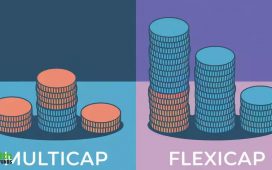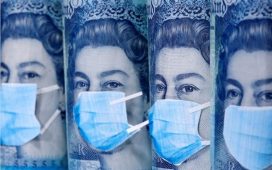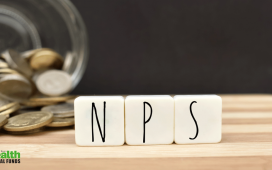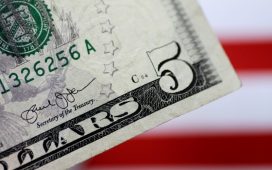
© Reuters. FILE PHOTO: Wads of British Pound Sterling banknotes are stacked in piles at the Money Service Austria company’s headquarters in Vienna, Austria, November 16, 2017. REUTERS/Leonhard Foeger
By Amanda Cooper
LONDON (Reuters) – The pound held steady on Friday, thanks to a modest lift from data that showed an improvement in UK consumer sentiment, but the currency was still headed for its first monthly drop since September.
British consumers have become more optimistic about their personal finances and the outlook for the economy, but their mood is a long way below where it was prior to the COVID-19 pandemic, market research firm GfK said on Friday.
was last flat against the dollar at $1.20165. The pound has lost 2.4% in value so far in February, the first month it has fallen since September’s near-4% fall to a record low.
Against the euro, the pound was unchanged on the day at 88.17 pence per euro. Broad-based weakness in the yen sent the pound up by as much as 0.5% to 162.62 yen, with incoming Bank of Japan Governor Kazuo Ueda saying it was appropriate to keep ultra-loose monetary policy.
A pick-up in consumer sentiment does not always translate into a pick-up in spending, as evidenced by a flat read of retail sales for February from the Confederation of British Industry on Thursday.
But energy prices are finally receding from last year’s punishing highs, and the UK economy is not looking quite so bad as expected just a few short weeks ago, according to this week’s Purchasing Management Index (PMI) surveys on business activity, which showed an unexpected bounce in early February.
“Following on from Tuesday’s strong PMI release, the UK outlook has received another boost today in the form of a big jump in GFK consumer confidence. This has now returned to levels not seen since last April,” ING strategist Chris Turner said.
“At the margin, this will make the Bank of England’s life harder as it seeks to cool aggregate demand to soften inflation,” he said.
The grind lower in the pound in February has, for once, had less to do with the weakness in the British economy and more to do with the view among investors that the Federal Reserve still has some way to go before it can stop raising interest rates, which has given the U.S. dollar this month its biggest boost since September.
“On sterling, we think this year will be more about pricing out bad news and less about pricing in good news, but 2024 looks more promising to us,” Michalis Rousakis, a strategist at BofA, said.
The BoE is widely expected to raise rates to a peak of around 4.6% by August, from 4.00% now. Money markets show traders believe UK rates will be around the 4.5% mark by the end of the year.
The Fed, meanwhile, is expected to raise rates to 5.35% by July, from 4.75% now, with little chance of any kind of drop before the end of 2023.









